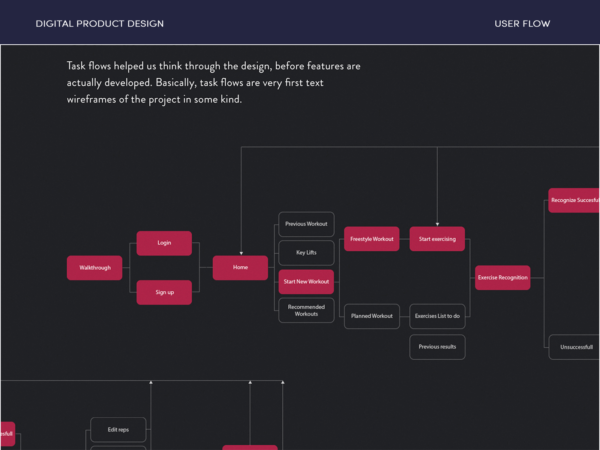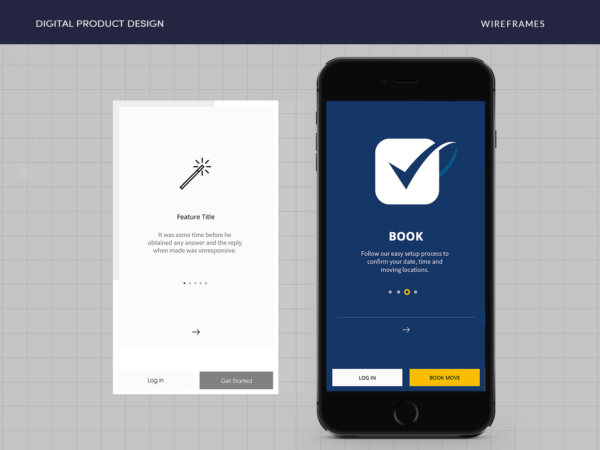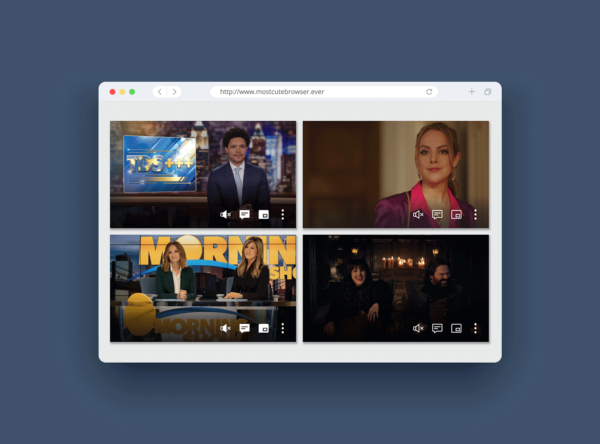Contents:
- What Is Usability Testing and Why Do We Do It
- When to Conduct a Usability Test
- Usability Testing in a Design Sprint
- Tips for Conducting a Usability Test Interview
- Three Simple Ways to Test Your Design Idea
- Five Best Ways to Communicate User Research Results
- Why Testing Gets Better with Time
Market response and product users typically tell the true story of what it’s like to interact with the design of a product. This makes them the most valuable asset you have for the product design process.
With user feedback on how your product works, time, and money can be saved during the development process. Design agents can find out what users liked most, make changes to things not well received, remove unnecessary features or components, and add differentiations that make your product a star!

Most of the time, there is a big difference between what users think and what organizations think they think.
Developing from the user’s point of view helps you stay on track with the goals of the product and ensures you develop the most useful, valuable product possible.
One of the most prominent players in the user testing tool market, User Zoom, conducted a study with Forrester Research on the value UX testing tools where they found a 537% return on investment for digital products utilizing their tool.
This incredible statistic is just one of many reasons why UX design and user testing of the best ways to discover product feature opportunities, validate design decisions and measure the potential success of your product.
What Is Usability Testing & Why Do It
“Usability testing is best described as the prelaunch stage of the UX design process where we evaluate the flow and viability of our product by testing it on actual users and implementing product design enhancements based on the results.” – Bridgette Bryant

User testing allows product designers to see how real users engage and interact with their products. Testing allows us to see where users encounter problems or cannot intuitively navigate the design.
The purpose of conducting a usability test is to get real feedback that can be analyzed and converted into design decisions that improve the quality of the product and make the user experience more delightful.
By observing what users do with the product and evaluating how they go about accomplishing tasks, we can eliminate guesswork and, click-by-click, improve the design interface based
on user behavior.
How and When to Conduct a Usability Test
When preparing for a UX text, developing a logical, clear structure will help the user navigate the process. It will also help to make sure they understand that it is not the user who is being tested; it is the design.
Let testers know valuable feedback is for the success of the product. Good communication can help calm participants and give them an idea of what they need to do. Realizing that the test is not a “test” will also help them be more natural with their actions and more honest in their feedback.
Usability testing comes after research, design-thinking, and planning, but before the primary market release.
When the UX process has done the market research, qualitative research, and competitive research, we will have clearly defined goals for the product. With that information, user personas are developed that match who we have identified as being most likely to enjoy and value what our product has to offer.
The research gathering and persona development stages provide a clear definition of what we are creating and for whom the product is being developed. Then the usability testing stage comes in to validate those decisions and remove complexity so we can optimize engagement. Usability testing also allows us to, in a sense, proofread the product and catch minor errors or bugs that were not seen previously.

New products that are coming to market have the highest return on investment when it comes to testing because they are able to save a lot of runaround and make a more perfect first-generation, which reduces the amount of negative feedback the product launch might otherwise have experienced.
Website redesign and products that have decided to rebrand for the more modern age can also find great value in usability testing.
By privately testing the first draft, product designers can determine what works best for targeted users and set up product interactions or include design features that support the needs of the individuals who will be considering and opting-in to what is being developed. The custom-designed product has an infinitely higher chance of standing out in a crowded marketplace which is why user testing is a necessity.
Methods and Environments for Usability Testing
After mapping out the goals of the test with stakeholders, product designs, and the development team we can get to the business of product design improvement.
What we are looking for is areas where users struggle with the existing design format and any recommendations they have for improvement.
Since the user-centered design is all about satisfying the user, tracking, measurement, and improvements to the product’s design are crucial.
Focus groups, A/B Testing, and expert usability audits are a great way of gathering solid feedback on usability.
a. Tools for Monitoring and Saving Human Insights
Deciding what changes need to be made on a website relaunch or determining the most effective potential ideas for a new marketing campaign WILL have a better ROI when ideas are first tested. As product designers and developers begin to more clearly express the impact of UX, platforms and solutions for getting the job done are emerging all over the Internet. These platforms make it easier for passionate producers to capture their audiences and innovate their products and campaigns.
Here are a few of the most highly rated usability testing tools:
Validately (by UserZoom)
b. Usability Testing in a Design Sprint
In a design sprint, usability testing can be one of the most important stages of the process because it gives you a chance to confirm your creation and make adjustments when necessary before jumping into the market.
This is particularly valuable in the design sprint use-case because, with the pace of production, it can be easy to overlook things. So you always want to make testing a part of any design sprint project.
It is crucial to establish sprint goals at the very beginning of the sprint design process.
When initiating the usability testing phase, we can begin with the end-goal at the forefront by testing objectives.

Design sprints are run to advance product development and create a usable initial output quickly.
Having a goal to hold onto like an anchor during a sprint ensures that no one runs off the map. During usability testing, before we introduce the testing process to participants, we formulate questions and decide on tasks the user(s) will be testing. To make that decision, we refer back to the initial sprint objective so we stay on track with our program inline with our purpose.
c. Live vs. Remote User Testing
There are benefits and optimal situations for each type of user testing experience. With live testing, you can see visual cues that the user may not consider important or be aware of. You can also analyze psychological signals that are subconscious and draw conclusions based on observed user patterns and tendencies. This information can add tangible value to your final research report.
Live user testing can be done one-on-one or in a group. You want to set up an inviting environment for the user and allow time for them to get comfortable because the more relaxed they are, the more honest and valuable their feet that can be. You also want to begin by asking generic questions. This can help loosen up the testing environment and increase the value of your feedback.
Live user testing is useful because you get to see your product design in use, real-time. You can also record sessions to share with the client or have the client onsite during testing, which makes reporting and getting “buy-in” on design decisions a more efficient process.
On the other end of the spectrum, remote user testing can allow for a larger testing population, which can help validate results and bring in a wider range of responses.
One of the major benefits of a remote test is that the user is in their comfortable, natural environment, most likely exactly where they will be when they are interacting with the design in real-time. According to usability.gov, the test should take 15 to 30 minutes and be comprised of 3 to 5 tasks.
Remote user testing can be moderated, tracked, and recorded for future reference using testing apps or traditional screen sharing tools that are now finding a complementary feature option in the area of remote, moderated usability research.
This means leveraging tools as simple as Google Hangouts to be physically “present” while remote so you can monitor user activity.
Dedicated remote UX testing tools now offer a lot of flexibility and can work well for overseas audiences.
The key to conducting a good remote user testing session is to make ease of use for the testing phase as important as it is for the product design being tested.
To test accurately and obtain an honest response from their interaction, remote users need to be comfortable with the method by which you are conducting the test. If they are frustrated because they had to download a piece of software or had issues with the Internet connection, that agitation will be carried over into the testing process and can affect feedback.
Here are some of the best times to consider opting for the remote test solution:
- When timelines make it difficult to schedule in-person testing
- There is a broad geographic disbursement of target user audiences
- If the number of tests run is an important factor
- As a supplement to live testing so you can compare and validate results
Tips for Conducting a Usability Test Interview
One of the main reasons it is essential to conduct an external usability test is because, often, when people are too close to a topic, it is not easy to see the obvious.
Testing with users who were not part of the foundational design designs will likely reveal issues and opportunities that the product design team was not able to identify.
 Filling in the gaps during the earliest stage of a product’s release can save millions in investment funds and may also save the life of the product itself.
Filling in the gaps during the earliest stage of a product’s release can save millions in investment funds and may also save the life of the product itself.
These are just a few of the key aspects of organizing and conducting a successful, unbiased usability test. Here are a few other important elements to keep in mind:
- Make a suitable and inviting environment, so the user feels comfortable expressing their true feelings
- Choose a goal or task for the user to achieve that is based on the purposes of the business or the design sprint
- Be sure to ask the reasons why they answered, responded, or had the expectation that they did
- Use open-ended questions so you do not skew the results of the usability test session
- As much as possible, when asking questions, lead with an unleading question. For example, “when you entered the checkout process and you saw the button labeled “X,” you…”
3 Simple Ways to Test Your Design or Idea
1. Design Concept Straw Poll
This internal test introduces 3-4 design concept executions to internal members of the team who were not a part of the ideation process and, therefore, are not coming in with preconceived notions. The poll begins by allowing participants to stroll around the room where the concepts have been placed on the walls of the room and are spread out fairly widely. In some cases, the participants are given post-its or stickers to silently highlight areas of interest or ask usability questions without interrupting the experience of the others.

At the end of a specified time period, usually 15 to 20 minutes, the participants are asked to vote on the concept they found to be most effective and engaging and informing them about the product and its value.
2. Guerrilla Testing
This is where test subjects are randomly chosen from an Internet forum or live in a public place and asked to perform some quick task, usually in exchange for a small incentive. The guerrilla test is a great way to acquire a large amount of base-level data or validate a specific design element}.
3. Prototype Test
The most common, a prototype test puts the product design right in the hands of the user and evaluates how they interact with it. This test takes the high fidelity prototype that would be produced using InVision, Marvel, or similar tool and loaded onto the user’s device so we can observe the best possible example of how they will interact with the final design.
This test provides the designer with feedback on the overall concept of the app or website – did the user get excited about the idea, were they genuinely interested in what it has to offer?
We can analyze the onboarding process to make sure users understanding the initial interactions and the steps they need to take. We can see how they utilize the navigation system and make sure they find it easy to contact product owners or communicate through features such as video, chat, and feedback ratings.
Most important, we can ask the question, “what can we do to make it better?” The replies to that all-important question will typically produce the most unexpected responses and are sometimes the most value-providing inputs for the next iteration of a product’s design.
The 4 Best Ways to Communicate User Research Results

1. Make it Visual
We use color-coded post-its so we can quickly see the trends in our research results. Heatmaps, number-driven survey results, and stats provided through A/B testing can all be delivered in a visually designed format that makes it easy to understand the valuable Intel gathered from research methodologies.
2. Format the Findings Simplistically
When sharing with stakeholders, it is important to keep the communicated data succinct and only delve deeply into the findings when requested.
3. Make it Accessible
This means delivering information in a way that makes it easy for decision-makers to access and review in their preferred manner.
The easiest way to do this is by creating a summary video so they have the option of seeing and listening to the report highlights, and they can play the video at their convenience. The video summary should be accompanied by a research report of the UX findings for those who prefer a written format and to distribute the findings to the development team.
4. Make it Easy to Follow and Format for Different Info Absorption Types
The report should begin with a summary of the findings and an outline of how those results can be used to improve the product’s design.
The outline should be two pages or less and in a skimmable format. It should be followed by a summary of the research methods, tools, and objectives. Next, the findings from the user experience research process should be presented in numbers, charts, and to-the-point text. Any dense data should be contained at the back or in an appendix where it can be accessed by individuals who are interested in that information. It should also be presented in a well-designed format that makes it easy to understand and digest.